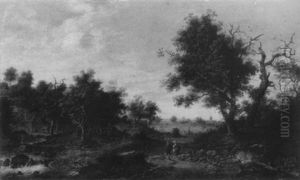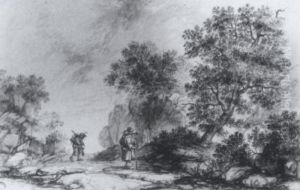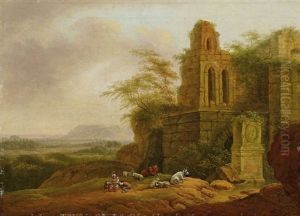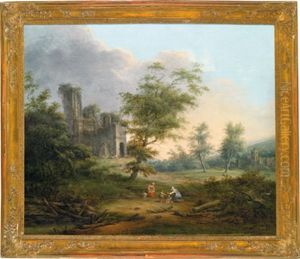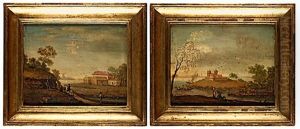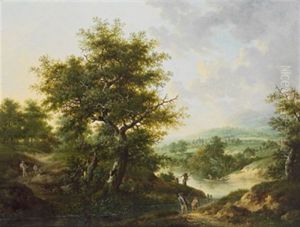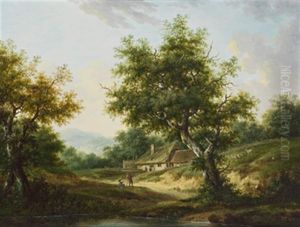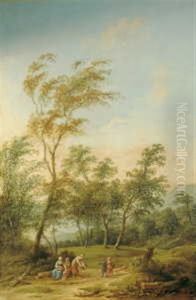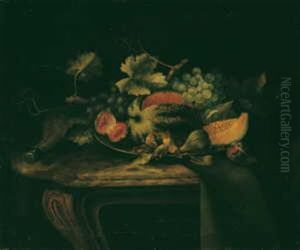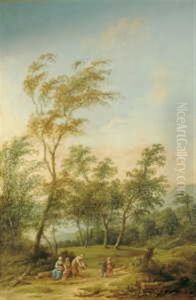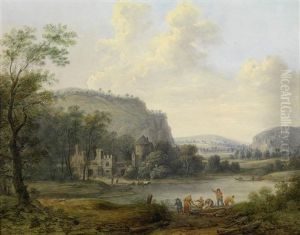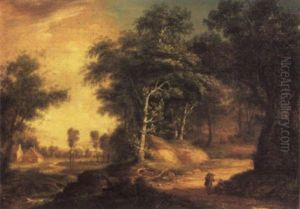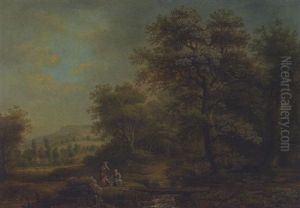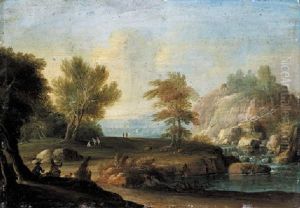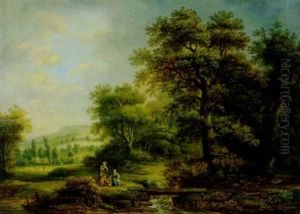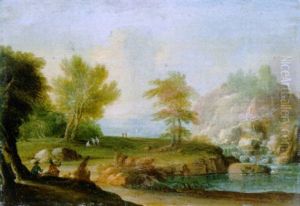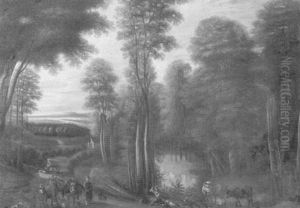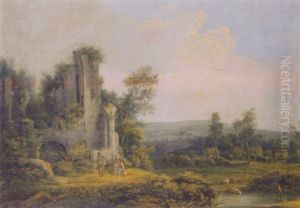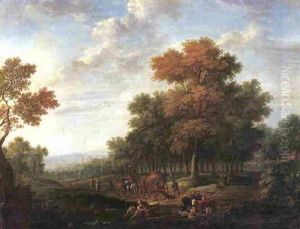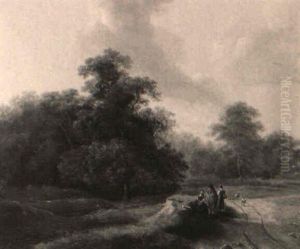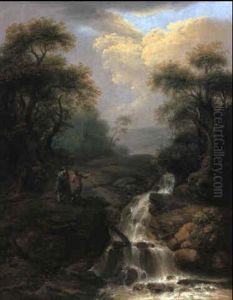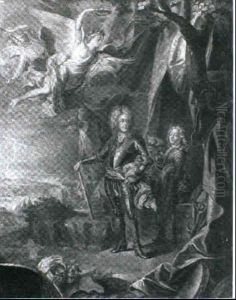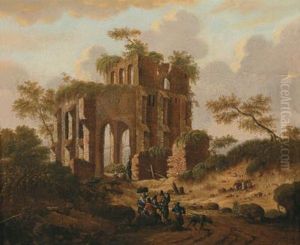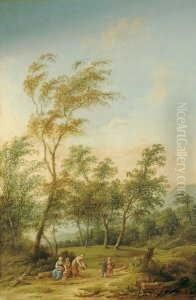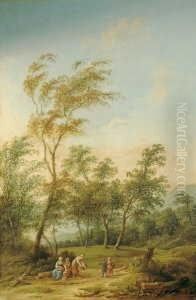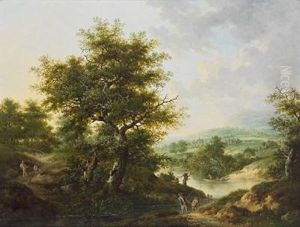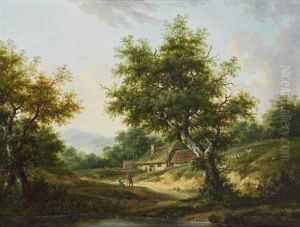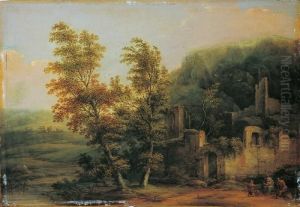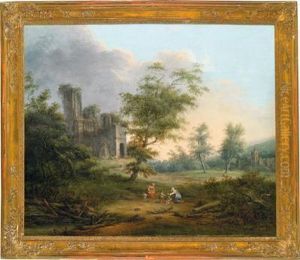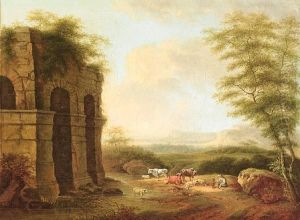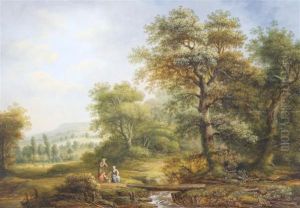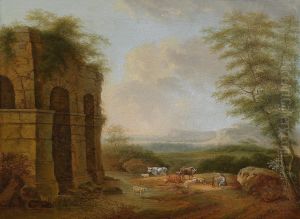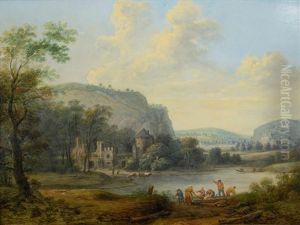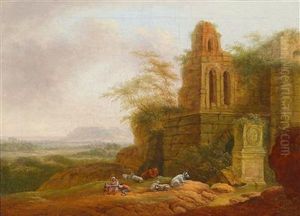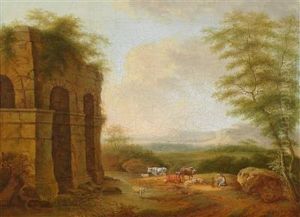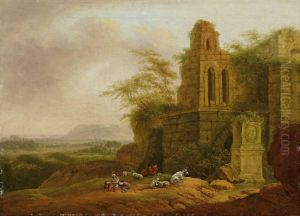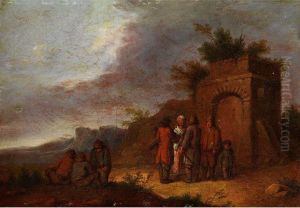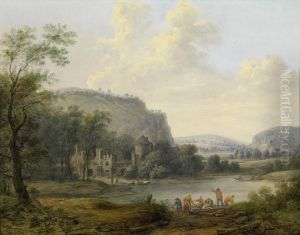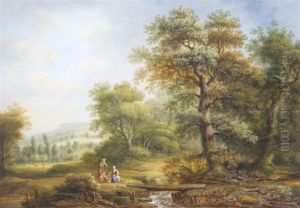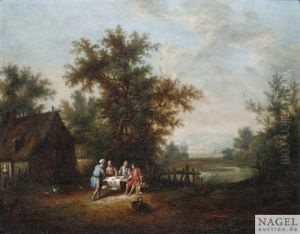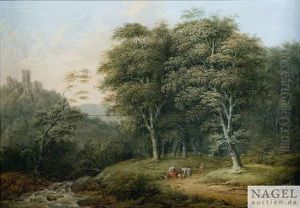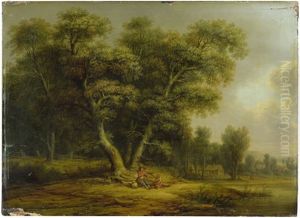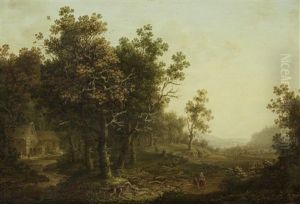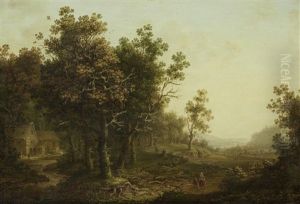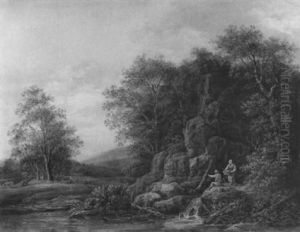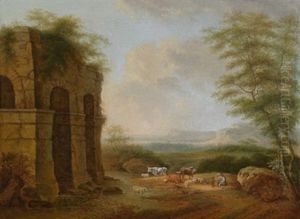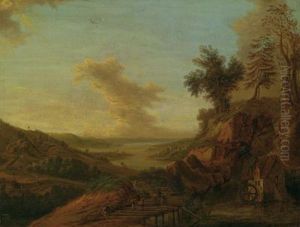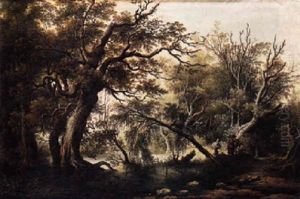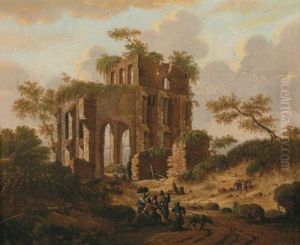Bernhard Gottfried Manskirch Paintings
Bernhard Gottfried Manskirch was a German artist known primarily for his work as a court painter during the late 18th and early 19th centuries. Born in 1750 in Koblenz, a city on the banks of the Rhine in what was then the Electorate of Trier, Manskirch's artistic talent was recognized at an early age. He received his early training in the arts in his hometown before continuing his studies in Paris, which was, during that time, a major center for artistic learning and a hub of the European art world.
Manskirch's style was influenced by the Rococo movement, which was prevalent during his formative years. The Rococo style, characterized by its ornate and decorative qualities, was particularly suited to the tastes of European courts, and Manskirch's work reflected this. He became known for his portraits and historical scenes, which often featured intricate detail, elegant compositions, and a soft, pastel color palette.
In 1778, Manskirch was appointed as a court painter at the court of Clemens Wenceslaus of Saxony, the last Elector of Trier. This position allowed him to work closely with the nobility and create portraits and other works that were commissioned by the court. His work during this period solidified his reputation as a skilled portraitist. Manskirch's portraits were not only appreciated for their aesthetic qualities but also for their ability to convey the social status and personality of the sitters.
Manskirch continued to work and live in the region, contributing to the cultural landscape of his time through his art. His body of work also includes religious subjects and allegorical scenes, although these are less well-known compared to his portraiture. Despite the political upheavals of the era, including the French Revolution and the Napoleonic Wars, Manskirch managed to maintain his position and continue his craft until his death in 1825.
Bernhard Gottfried Manskirch's legacy is that of a court painter who captured the essence of his time through the lens of Rococo elegance. While not as widely recognized as some of his contemporaries, his work provides a valuable insight into the aesthetics and cultural priorities of the courts where he served. His paintings remain as historical documents of the period, reflecting both the artistic trends and the societal structures of his time.
